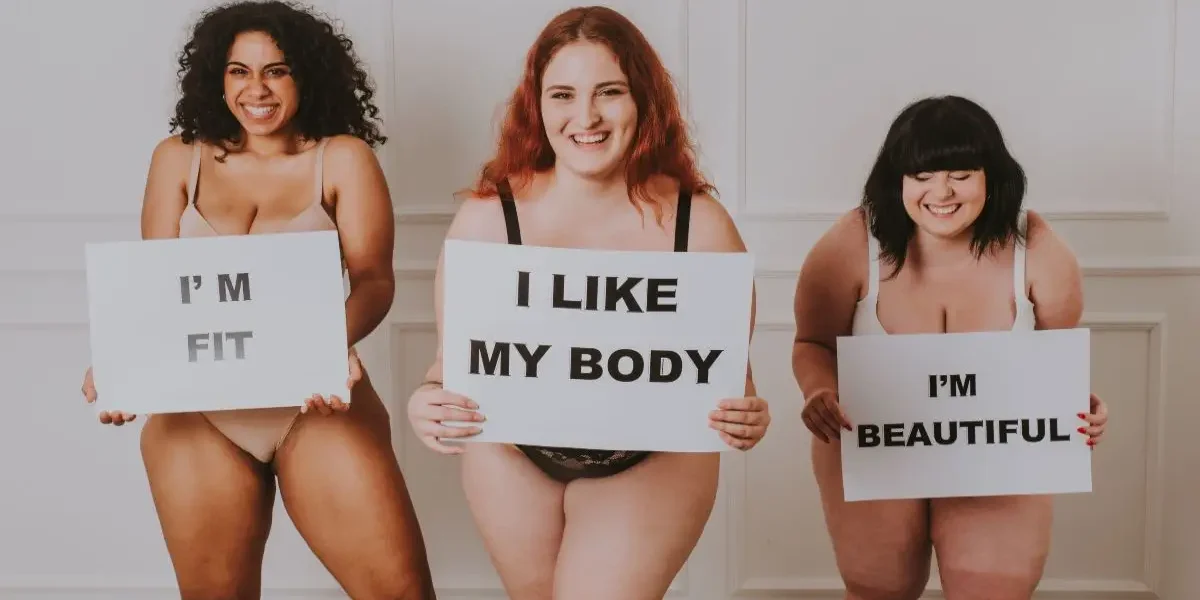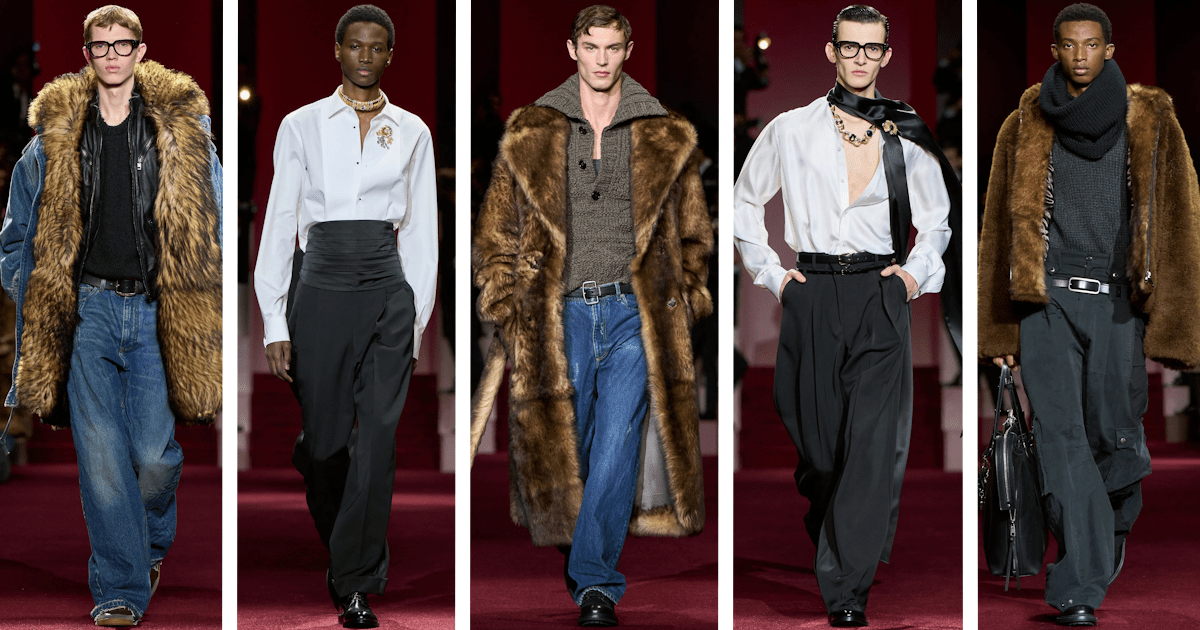The concept of body positivity has evolved to represent the idea of embracing and loving one’s body, regardless of its size or shape. Over recent years, the term has gained significant traction, yet its commercialization raises concerns. Instead of genuinely promoting self-acceptance, the mainstream adoption of body positivity often seems more focused on benefiting large corporations that continue to perpetuate harmful beauty standards. This commercialization can dilute the movement’s original intention, making individuals question whether the love for themselves is authentic or merely a marketing strategy.
As the fashion industry increasingly showcases plus size models and campaigns claiming to embrace body positivity, it becomes evident that the term does not always encompass all bodies. This selective inclusion can alienate those who feel that their experiences and struggles are overlooked in the conversation. Therefore, the challenge remains: how can we ensure that body positivity is genuinely inclusive and representative of diverse body types?
To gain deeper insights, we consulted several prominent plus size activists and influencers regarding their perspectives on the meaning of body positivity and its impact on individuals. Many of these individuals, once empowered by the movement, now express uncertainty about their place within it, revealing a growing concern about the direction it has taken.
Reassessing the Impact and Purpose of Body Positivity
Exploring Whether Body Positivity is Beneficial or Harmful to Individuals
To delve into this critical dialogue, we conducted interviews with six influential voices in the plus size community, each offering unique insights into the complexities of body positivity. These voices include Sonya Renee Taylor, Founder of The Body Is Not An Apology; Virgie Tovar, Author of Hot & Heavy: Fierce Fat Girls on Life, Love and Fashion; Corissa Enneking, Plus Size Fashion Blogger and Creator of Fat Girl Flow; Marie Southard Ospina, Writer for Bustle and other notable platforms; Maui Bigelow, Plus Size Fashion Blogger for Phat Girl Fresh; and Ariel Woodson, Co-Host of Bad Fat Broads.
These activists are not only advocates for the plus size community but are also engaged in meaningful conversations that challenge the status quo. We began by asking them to reflect on their understanding of the origins of body positivity, which, like many discussions, yielded varied responses. A common theme emerged in their reflections: uncertainty.
The roots of body positivity are often traced back to the Fat Activism and Health At Every Size movements, with the term first gaining significant attention through The Body Positive organization founded in 1996 by Connie Sobczak and Elizabeth Scott. Their mission was to create a supportive community that promotes healing from societal messages that foster body hate and discrimination.
Despite its long history, many activists, including Tovar, note that the term was not widely recognized in discussions surrounding body image until more recently. Tovar recalls,
“When I began doing fat activism in 2010, I don’t recall it being part of our conversations,” she explains. “It seemed to gain momentum as fat activism received more mainstream attention.”

Ospina recalls first encountering the term around 2011/2012 on social media platforms like Twitter and various personal style blogs, emphasizing its deep-rooted connection to fat activism. She describes the initial usage of the term as being closely tied to radical movements advocating for size acceptance and body politics.
“Back then, it seemed to be primarily utilized by individuals rooted in radical size acceptance and body politics,” Ospina reflects. “The connection to the fat community was unmistakable — anyone adopting this terminology was likely advocating against societal size discrimination.”

The phrase, “all bodies are good bodies”, encapsulates the essence of the body positivity philosophy. However, the execution of this belief often falters in practice. As certain voices dominate the conversation, the movement can appear more focused on individual experiences rather than collective empowerment.
“What began as a movement has morphed into a catch-all phrase for ‘you do you,’” Enneking observes. “Body positivity is inherently political, as it challenges and seeks to dismantle the oppression faced by bodies outside the societal ‘norm.’ As it gains mainstream traction, some individuals shy away from addressing the political implications of inhabiting a body that faces systemic oppression.”
As body positivity becomes more mainstream, its true meaning has become obscured. The vagueness of the term poses challenges for activists like Tovar, who express concern about the lack of clarity surrounding its definition.
“The term is intentionally ambiguous and gains traction through the ‘loud silences,’” Tovar explains. “It’s akin to wearing a ‘girl power’ t-shirt without committing to the principles of feminism, thus reaping the benefits of activism without the accountability that comes with it.”
Tovar highlights that this lack of a concrete definition not only distracts from the goal of body positivity but also diminishes accountability for creating systemic changes needed to address body image issues.
According to Taylor, this focus on individualism within body positivity fails to serve everyone, as it never truly did. The complexities of body positivity require a more nuanced understanding that transcends mere self-acceptance.

“The term itself is complicated by the fact that it has never been enough,” Taylor asserts. “While body positivity is a positive sentiment, merely feeling good about one’s body fails to dismantle the oppressive systems that affect marginalized bodies. The discourse surrounding body positivity tends to be limited, primarily focusing on size, which excludes many individuals from the conversation. As it has gained mainstream visibility, it has also highlighted its shortcomings in analysis.”
Woodson has been vocal about the ways in which body positivity overlooks individuals who do not conform to the plus size beauty ideal. A glance at the media’s portrayal of body positivity reveals a homogeneous representation: predominantly hourglass figures, fair skin, and flat stomachs, often neglecting the diverse experiences of others.
This selective representation enables some individuals to advocate for their own bodies while disregarding the struggles faced by others.
Woodson elaborates on the distinction between body positivity and fat positivity:

“Body positivity seeks to reassure those least affected by structural oppression that ‘they’re pretty too,’ primarily focusing on individual feelings. In contrast, fat positivity strives to uplift and support the most marginalized individuals, emphasizing the need to dismantle systemic discrimination against fat bodies in all their forms.”

In this ongoing discourse about body representation, three key concepts often intersect: body positivity, body autonomy, and fat acceptance/fat positivity.
Understanding Body Positivity, Autonomy, and Fat Acceptance
Woodson asserts that fat positivity aims to confront the systemic oppression faced by fat bodies in ways that body positivity often overlooks. However, the distinction between body positivity and body autonomy can sometimes become blurred.
“In my view, both body positivity and body autonomy revolve around individuals exercising their rights over their bodies,” Bigelow explains. “While they share similarities, one can exist independently of the other. Body positivity emphasizes self-love and respect for all, while body autonomy focuses on the individual’s control over their own body.”
Body autonomy empowers individuals to make personal decisions regarding their own bodies, advocating for the right to choose without external pressures.
Navigating Personal Choices and Their Societal Implications
“We should have the freedom to make choices regarding our bodies as long as they do not negatively impact anyone else,” Taylor states. “Yet, the overarching structure we operate within is a westernized, capitalist system that often disregards interconnectedness.”
“Our actions not only influence this structure but also affect the lives of others, highlighting how body autonomy can sometimes overlook the broader implications of our choices.”
The discourse surrounding dieting frequently illustrates the limitations of body autonomy in dismantling larger systems that oppress fat bodies. Celebrating weight loss in the media as a form of body positivity typically centers on individual choice, but it often neglects to address the societal pressures that drive these choices.
Bigelow emphasizes that losing weight does not negate body love; rather, it reflects an individual desire for change. However, the underlying reasons for weight loss often become obscured in favor of personal narratives.
It is essential to examine the motivations behind our actions, particularly when they may be rooted in societal pressures and discrimination.
“It’s crucial to interrogate the reasons behind our desires to alter our bodies, especially when those desires are influenced by systemic oppression,” Ospina argues. “The weight loss industry perpetuates the myth that losing weight is a panacea for all ailments, promising that a smaller body will equate to a happier life.”
“These messages are neither empowering nor inclusive, making it difficult to reconcile weight loss with body positivity,” Ospina concludes.

For Enneking, the harmful aspect lies not in the act of losing weight itself but rather in engaging with diet culture. It is less about the decision to lose weight and more about the motivations behind that choice.
Fostering Compassionate Conversations Within the Community
Approaching these complex discussions requires an emphasis on compassion and respect for varying perspectives. Each activist offers different insights on how to navigate these conversations effectively.
“It’s vital to remember that no one in this conversation is inherently bad,” Enneking emphasizes. “Those who participate in diet culture are not bad people; they are merely seeking ways to love themselves in a society that often promotes self-hatred.”
“We’re all doing our best. This doesn’t mean we shouldn’t critically evaluate our actions and consider their impact on others and on society as a whole. Perfection is unrealistic, and we must engage in discussions about how we can improve together.”
As we all grapple with our own body image issues and strive to overcome internalized shame, it is essential to ensure that diverse voices are included in these conversations.
Woodson succinctly states, “Those who face fewer obstacles should consider stepping back and allowing those who are more marginalized to lead.”
Taylor reinforces the importance of recognizing who is absent from these discussions, prompting individuals to reflect on the inclusivity of their conversations.
“If we fail to notice others’ bodies, we risk overlooking their experiences. My work is about being aware of who is not in the room and striving to change that. When we view body positivity as separate from broader social issues, we miss critical opportunities for connection and understanding. By acknowledging the interconnectedness of all systems of oppression, we encourage individuals to consider the experiences of those beyond their own,” Taylor states.
The intersectionality of marginalized identities is frequently overlooked in discussions about body positivity and body autonomy. When the conversation centers solely on individual experiences, it loses its broader significance.
Defining Body Positivity in Today’s Context
The current understanding of body positivity remains somewhat ambiguous. Perhaps it never possessed a clear definition to begin with. The notion of loving one’s body without considering the experiences of others and the various forms of oppression they encounter is inherently flawed. Genuine liberation from body-related oppression necessitates a release from personal shame.
In a society that fosters acceptance rather than shame, we can begin to embrace our bodies authentically.
Recognizing the complexities of this discourse is not a simple task. The conversation surrounding body positivity is ongoing and requires continuous engagement. As Taylor aptly summarizes:
“We often seek straightforward answers, yet they are elusive. The nuances of this topic are intricate and demand exploration of the complexities involved.”
When it comes to body positivity, it is crucial to shift our focus from seeking definitive answers to asking more profound questions about inclusivity, representation, and accountability.






